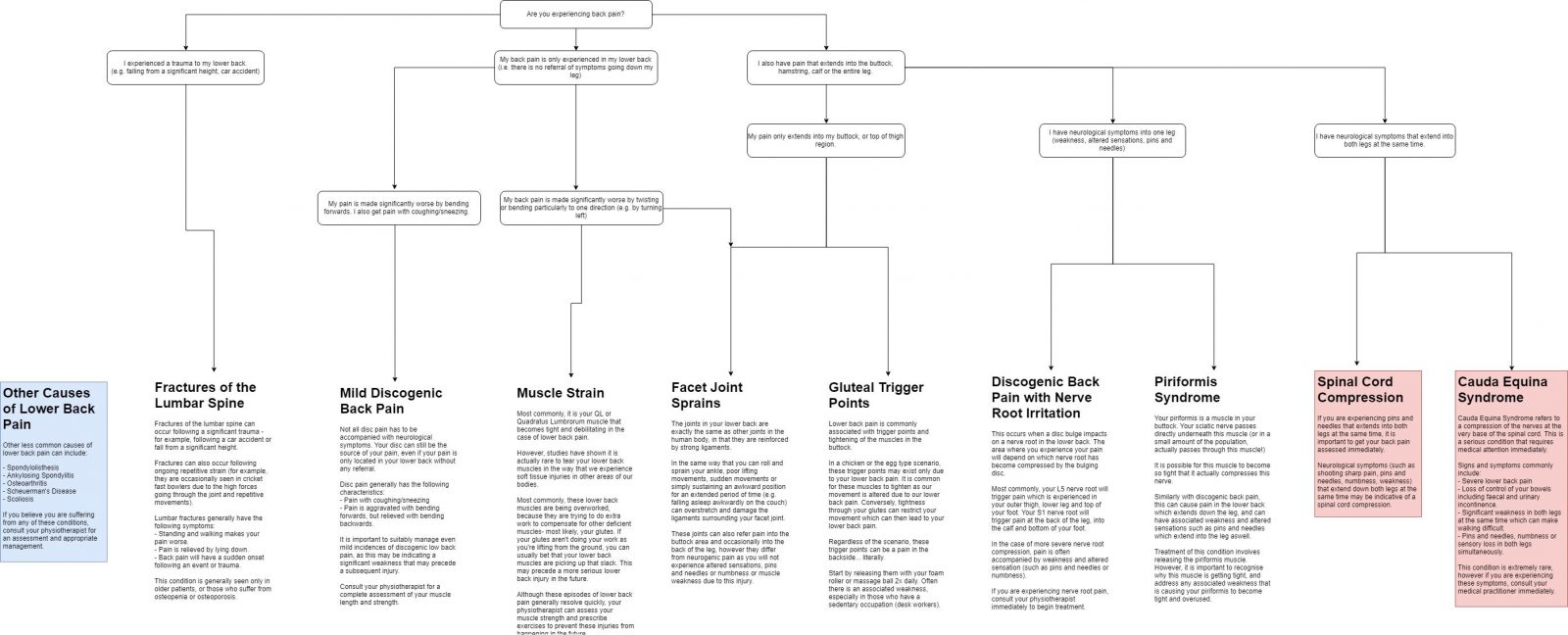Physiotherapy for Lower Back Pain
Back pain affects 85% of the population at some point throughout their lives; and is the most common musculoskeletal issue experienced by those under the age of 45.
But, did you know that only 1-2% of back pain has an identifiable cause that is shown on X-Ray or MRI findings – these include fractures, tumours and nerve root compressions.
Infact, it is for this reason that investigations are generally NOT required, and often associated with poorer outcomes if investigated unnecessarily.
So, what causes back pain?
Most commonly, a tightness in your muscles or joints, caused by a series of muscle imbalances – tight muscles and weak muscles – that occurs through a lack of movement variety. For example, a significant portion of back pain results from tightness through the hips and gluteals, triggered by extended periods of sitting.
Your physiotherapist can quickly ease your back pain by alleviating tightness through these muscles and joints. They may use a combination of techniques including massage, joint mobilisations, manipulation or dry needling.
Furthermore, they can identify the underlying areas weakness that caused your pain. In turn, they can prescribe you a series of exercises aimed to address these areas of dysfunction to stop your pain from recurring.
LOW BACK PAIN FLOWCHART
The above flowchart is a basic guide for self-diagnosing your lower back pain. Please click on the picture to expand the image.
Based on the mechanism and history behind your lower back pain it aims to provide you with an insight into your potential diagnosis. However, please note that this is by no means an exhaustive list of pathologies that can result in low back pain. This flowchart is simply a guide on the most common causes of short term lower back pain, such as discogenic pain, facet joint sprains and muscle strains. It also outlines common causes of sciatica including nerve root irritations and piriformis syndrome.
It is important that if you are experiencing neurological symptoms that are extending into both legs (e.g. pins and needles, numbness, weakness) that you consult a physiotherapist or medical practitioner immediately as this may be a sign of a more serious pathology.
If you are experiencing recurrent pain it is important to get this assessed by your physiotherapist. Minor, but repetitive incidents of pain should be treated as a sign of a potentially more significant event.
Also bear in mind, that if you are dealing with chronic/long term lower back pain, we need to shift our focus towards ‘why’ structures in your back are becoming overloaded/tight/painful. With more chronic conditions, our treatment will be aimed towards appropriate exercise rehabilitation to strengthen muscles (e.g. core or glutes) which will reduce the strain being placed onto your lower back.


